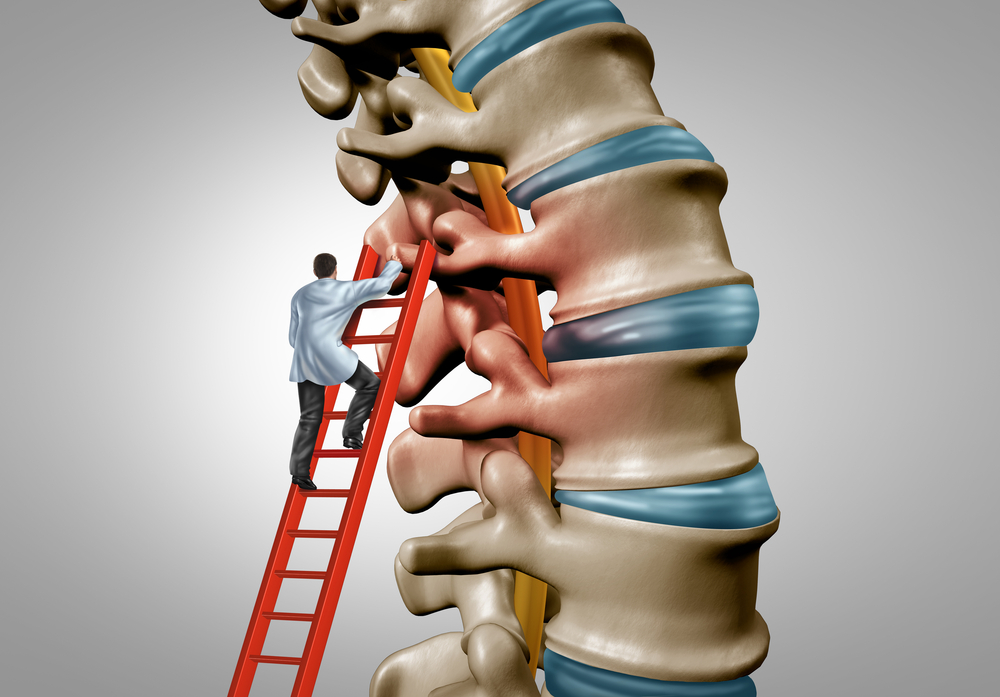
Spondylolisthesis, simply put, is when one vertebra in the spine slips forward onto the vertebra below it. What causes this slippage is often complex, involving multiple factors that place extra stress and strain on the spine.
Anatomy and Function of the Spine
The spine is comprised of 33 vertebrae interlocked with discs and facet joints, held together by ligaments and muscles, allowing both flexibility and structural support. The lumbar vertebrae in the lower back withstand the most weight bearing and are frequent sites of spondylolisthesis.
What is Spondylolisthesis?
Spondylolisthesis occurs when a vertebra excessively slides forward over the one below, often pinching nerves and causing pain. Several types happen based on the underlying reason:
Degenerative
Age-related wear and tear leads to slippage, usually in the lumbar area of older adults. Spinal arthritis, disc degeneration, and osteoporosis contribute.
Congenital/Dysplastic
Misaligned vertebrae from embryonic development shift over years, frequently causing adolescent symptoms during growth spurts.
Traumatic
Sudden injuries like fractures displace vertebrae, with further slipping from normal activity afterwards. Accidents and sports impacts often precede this.
Isthmic
Stress fractures in the pars interarticularis joints from overuse events in athletics enable slippage in youths and teens.
Pathologic
Severe osteoporosis, spinal infections, tumors or post-surgical complications instigate slippage by weakening bone.
Doctors grade severity from I to IV based on the percentage of forward displacement. Increased slippage escalates nerve compression.
Risk Factors and Contributing Causes
Multiple factors place excess stress on the spine, initiating spondylolisthesis development:
Age
Advanced age leads to higher probabilities of spinal arthritis, wear and tear, osteoporosis, disc degeneration and associated slippages.
Genetics
Certain genetic mutations and ethnic predispositions can substantially heighten one’s chances of developing spondylolisthesis. Recent research has identified multiple gene variations connected to thinner and weaker spinal vertebrae prone to instability issues. Several other genetically linked skeletal disorders also correspond to a diagnosis of spondylolisthesis by early adulthood.
Trauma & Overuse
Sudden bodily traumas like motor vehicle accidents or falls can overextend or fully fracture the vertebral bones and discs, which are already prone to injury. Additionally, repetitive movements in certain athletics that hyper-extend the back beyond its normal range cumulatively damage those delicate junctions over time. Physicians have found activities such as gymnastics, football, and weightlifting increase the risks of spinal instability. The constant collisions and hyperextension necessitated in these sports slowly impair the facet joints with microtraumas that accumulate.
Other Spinal Disease
Those with spinal tumors, infection, osteoporosis, arthritis and prior complication-prone surgeries have significantly heightened odds of slippage issues. Osteoporosis alone makes age-related degenerative spondylolisthesis up to 5 times more likely.
Managing contributing conditions lessens probability of symptomatic spondylolisthesis according to studies. For example, maintaining strong bone density and mass through middle age prevents osteoporosis later on, lowering associated spondylolisthesis prevalence.
Symptoms and Complications
Pain starts locally in the lower back as spondylolisthesis progressively worsens, frequently later radiating into nearby tissues as nearby nerves become irritated and inflamed. In severe untreated cases, loss of bladder or bowel control may even occur from extreme slippages impinging the cauda equina nerves.
Diagnosis
Doctors diagnose spondylolisthesis from a medical history, physical exam, and spinal imaging tests like x-rays, CTs or MRIs to assess slippage severity and precise neurological involvement.
Treatment Options
Effective spondylolisthesis treatment realigns the spine, alleviates pain, and prevents slip progression. Physicians often advise trying 6 months of noninvasive conservative care before considering surgery.
Conservative Treatment
Bracing, anti-inflammatories, NSAIDs, injections and physical therapy effectively control symptoms for many with low grade spondylolisthesis without surgery.
Surgical Options
If conservative measures fail for those with moderate to severe slipping and neurological compressions, spinal fusion procedures, often alongside surgical decompression, are reliable options with high long-term success rates.
Conclusion
In summary, spondylolisthesis has numerous possible causes – age-related degeneration, congenital misalignments, accumulated traumatic injuries, biomechanical overuse damage, and complications of other spinal disease. Early medical consultation and management of both spondylolisthesis and any underlying contributors yields more positive outcomes according to experts.
Written by Dr. Tony Mork
Orthopedic Spine Surgeon
I’m Dr. Tony Mork, MD, a Minimally Invasive Orthopedic Spine Surgery Specialist in Newport Beach, California. With over 40 years of experience, I’m dedicated to providing information for all topics that involve neck and back pain.
February 9, 2024
Contact a Spine Specialist Near You!
Related Articles
Lower Back Pain | An Overview
Lower back pain is an exceedingly common affliction that affects up to 80% of adults at some point in their lives. Understanding the underlying causes of lower back pain is key to finding the appropriate treatment and relief. Anatomy of the Lower Back The lower back,...
Degenerative Disc Disease | Causes and Risk Factors
Degenerative disc disease describes age-related wear and tear to the rubbery spinal discs cushioning the vertebrae that can lead to chronic back or neck pain. While partly genetic, there are also lifestyle factors and injuries that accelerate disc degeneration over...
Upper (Thoracic) Back Pain | What is Causing My Pain?
Upper back pain is a surprisingly common affliction, affecting up to one-quarter of the adult population at some point. While not as prevalent as lower back pain, discomfort in the thoracic region still accounts for a substantial slice of musculoskeletal complaints...



